
Overview
This article delineates nine powerful strategies designed to elevate click-through rates (CTR) for direct-to-consumer (DTC) brands. It underscores the critical role of data-driven insights, user experience optimization, and impactful messaging. Each strategy, ranging from:
- The utilization of analytics tools
- The execution of A/B testing
- The creation of compelling meta descriptions
- The incorporation of customer feedback
illustrates how targeted approaches can substantially enhance engagement and conversion rates.
Introduction
The digital landscape is in a state of constant evolution, and for direct-to-consumer (DTC) brands, mastering click-through optimization is not just beneficial—it's essential for distinguishing themselves in an increasingly crowded market. By implementing effective strategies, businesses can significantly enhance their online engagement, resulting in increased traffic and conversions. Yet, with a plethora of techniques available, which ones genuinely drive results? This article examines nine powerful strategies that DTC brands can leverage to elevate their click-through rates, ultimately transforming casual visitors into loyal customers.
Parah Group: Implement High-Velocity CRO Programs to Enhance Click-Through Rates
Parah Group stands at the forefront of implementing high-velocity Conversion Rate Optimization (CRO) programs, focusing on rapid testing and iteration. By harnessing data-driven insights and the principles of consumer psychology, these programs are meticulously crafted to significantly enhance click-throughs. The agency's strategic approach guarantees that every facet of an entity's online presence is optimized for maximum engagement, ultimately leading to increased traffic, conversions, and click-throughs. This robust methodology not only addresses immediate performance challenges but also cultivates long-term growth by consistently adapting to market fluctuations and evolving consumer behavior.
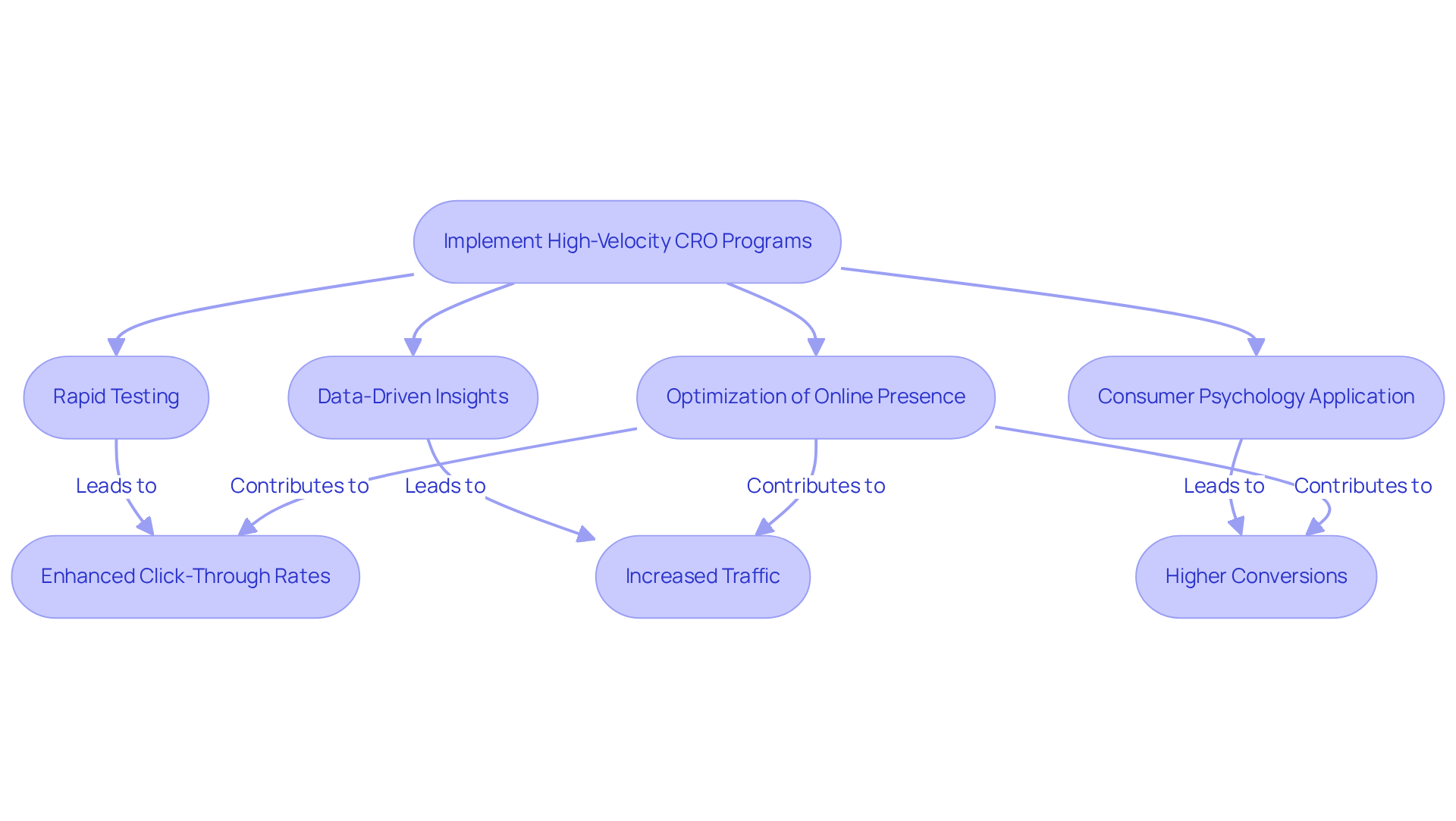
User Session Recordings: Analyze Visitor Behavior to Optimize Click-Throughs
User session recordings serve as an invaluable asset for comprehending visitor navigation on a website. By meticulously analyzing these recordings, companies can:
- Pinpoint where users abandon processes
- Identify elements that capture attention
- Assess interactions with various site components
This insight is essential for improving engagement metrics and increasing click-throughs, empowering companies to implement informed modifications to their design and content. For example, should recordings reveal users hesitating at a specific call-to-action, it signals a potential need for clearer messaging or a more compelling design. Such actionable insights not only enhance user experience but also drive click-throughs and conversion rates.
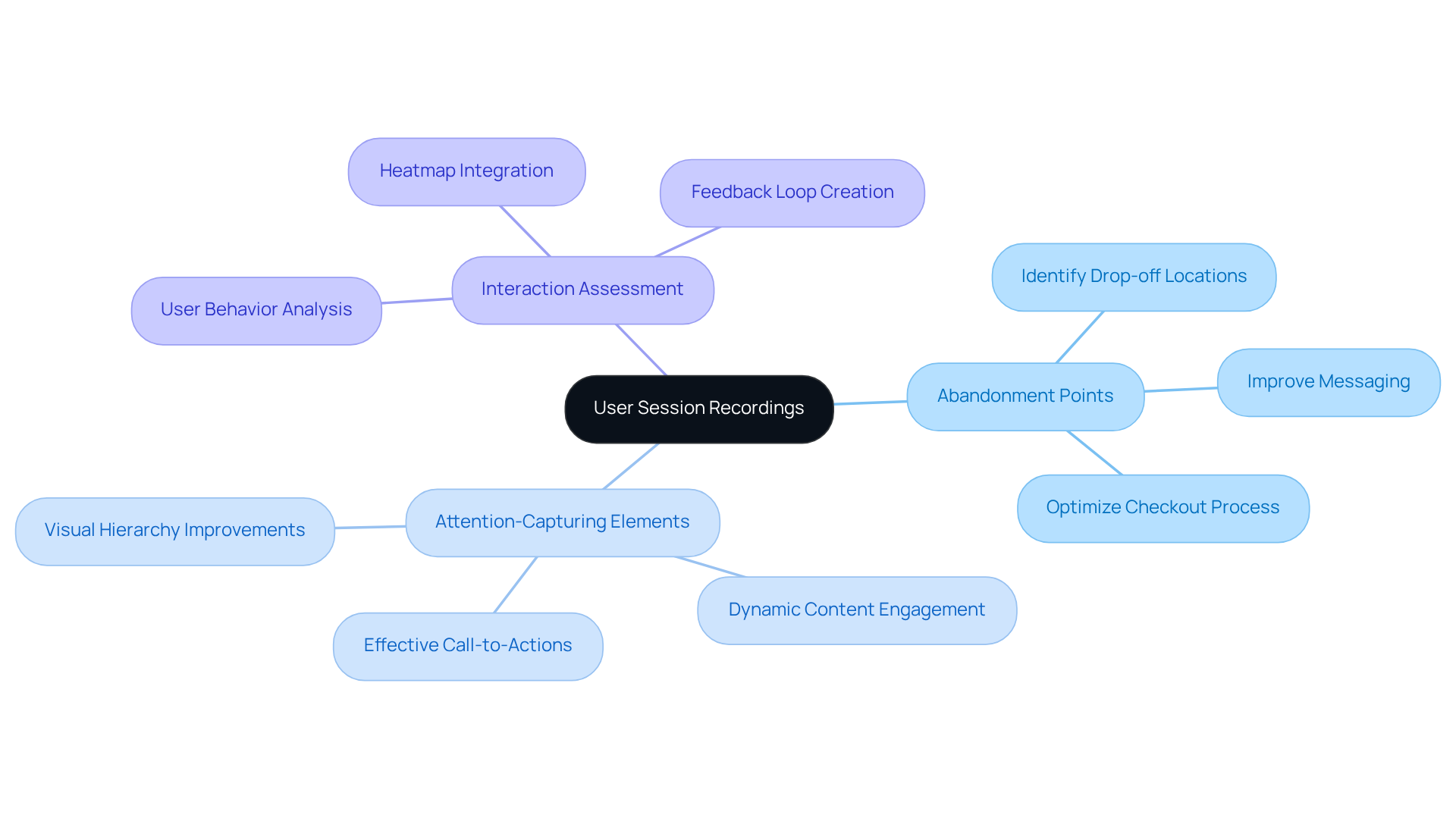
Competitor Analysis: Leverage Insights to Enhance Your Click-Through Strategy
Conducting a comprehensive competitor examination is essential for DTC companies aiming to elevate their engagement metrics. By scrutinizing rivals' websites, advertising strategies, and customer interaction tactics, companies can uncover effective methods that resonate with their target audience. This analysis not only identifies market gaps but also emphasizes successful messaging and design elements that enhance engagement.
For example, if a competitor's ad copy consistently outperforms others, analyzing its structure and language can provide invaluable insights for refining your own campaigns. Notably, companies leveraging competitor insights can significantly boost their click-throughs, as evidenced by successful campaigns like Birchbox's 'Love, you.', which achieved an impressive 61% conversion rate.
Furthermore, implementing tactics such as A/B testing various ad formats and messaging can result in a 25-55% reduction in cost-per-click (CPC) across platforms like Meta and TikTok. Marketing strategists assert that understanding what works for competitors transcends mere imitation; it involves innovating on proven strategies to craft compelling ads that achieve high click-throughs and capture consumer attention.
Additionally, companies can introduce 20-30 variations of creatives weekly to evaluate performance, ensuring they identify the most effective strategies. With most winning creatives emerging from the top 10% of tests, the significance of competitor analysis in pinpointing high-performing strategies is paramount.
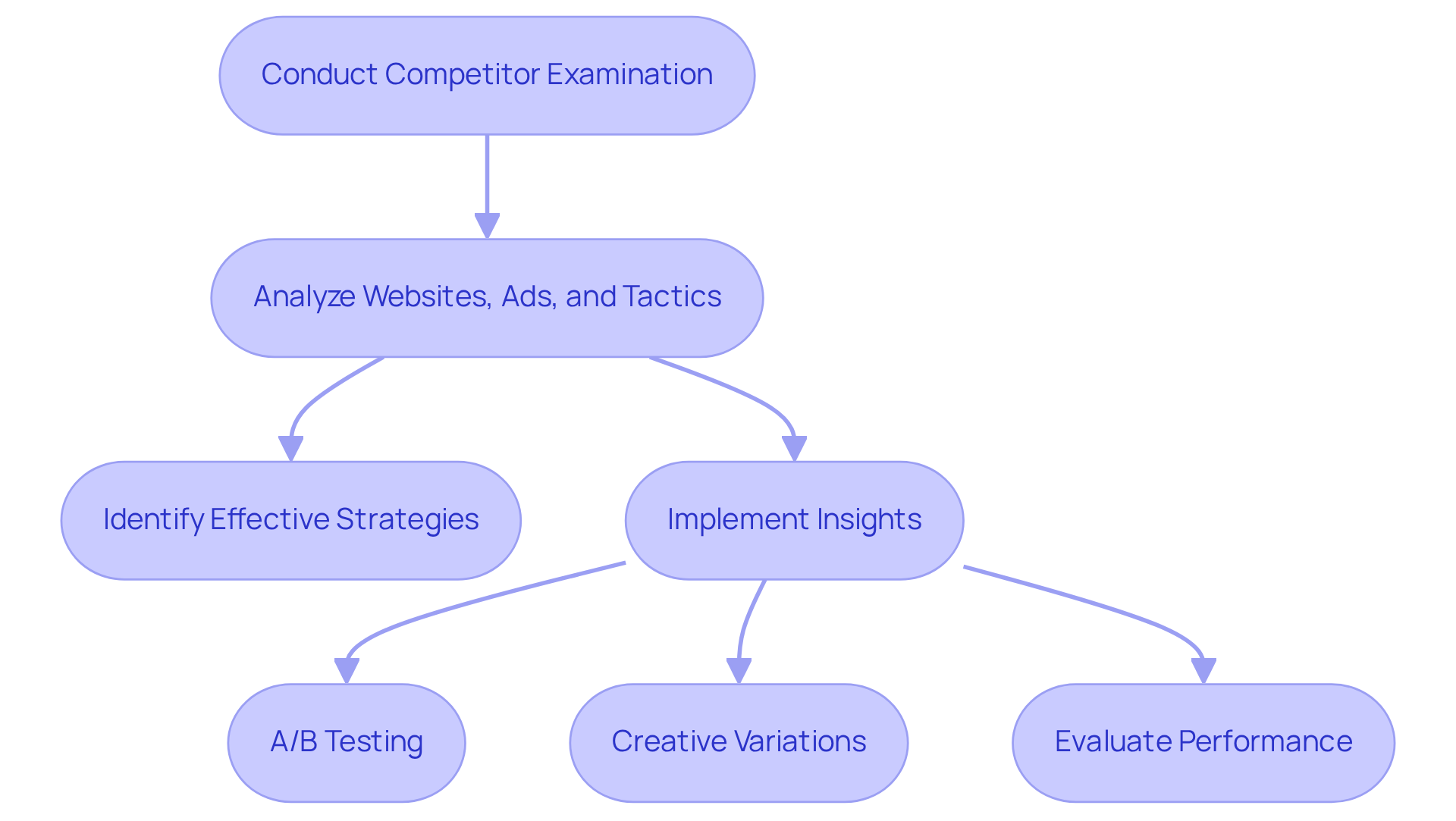
Conversion Copywriting: Craft Compelling Messages to Drive Clicks
Conversion copywriting represents a strategic approach that merges creativity with persuasion, crafting messages designed to engage and motivate action. To effectively drive clicks, copy must resonate with the audience's needs and desires, employing clear and compelling language. This entails:
- Utilizing strong calls-to-action that prompt immediate responses.
- Incorporating a sense of urgency to encourage swift decisions.
- Addressing specific pain points.
- Emphasizing the benefits of products or services.
For instance, instead of merely listing product features, successful copy illustrates how these features resolve customer challenges or enhance their lives.
Furthermore, incorporating social proof—such as testimonials and case studies—greatly enhances credibility and conversion figures. By employing persuasive language, emotional triggers, and insights drawn from customer research and psychological principles, companies can significantly elevate their click-throughs, transforming casual visitors into engaged customers. Moreover, utilizing A/B testing enables brands to continuously refine their messaging, ensuring that their copy remains effective and aligned with audience expectations.
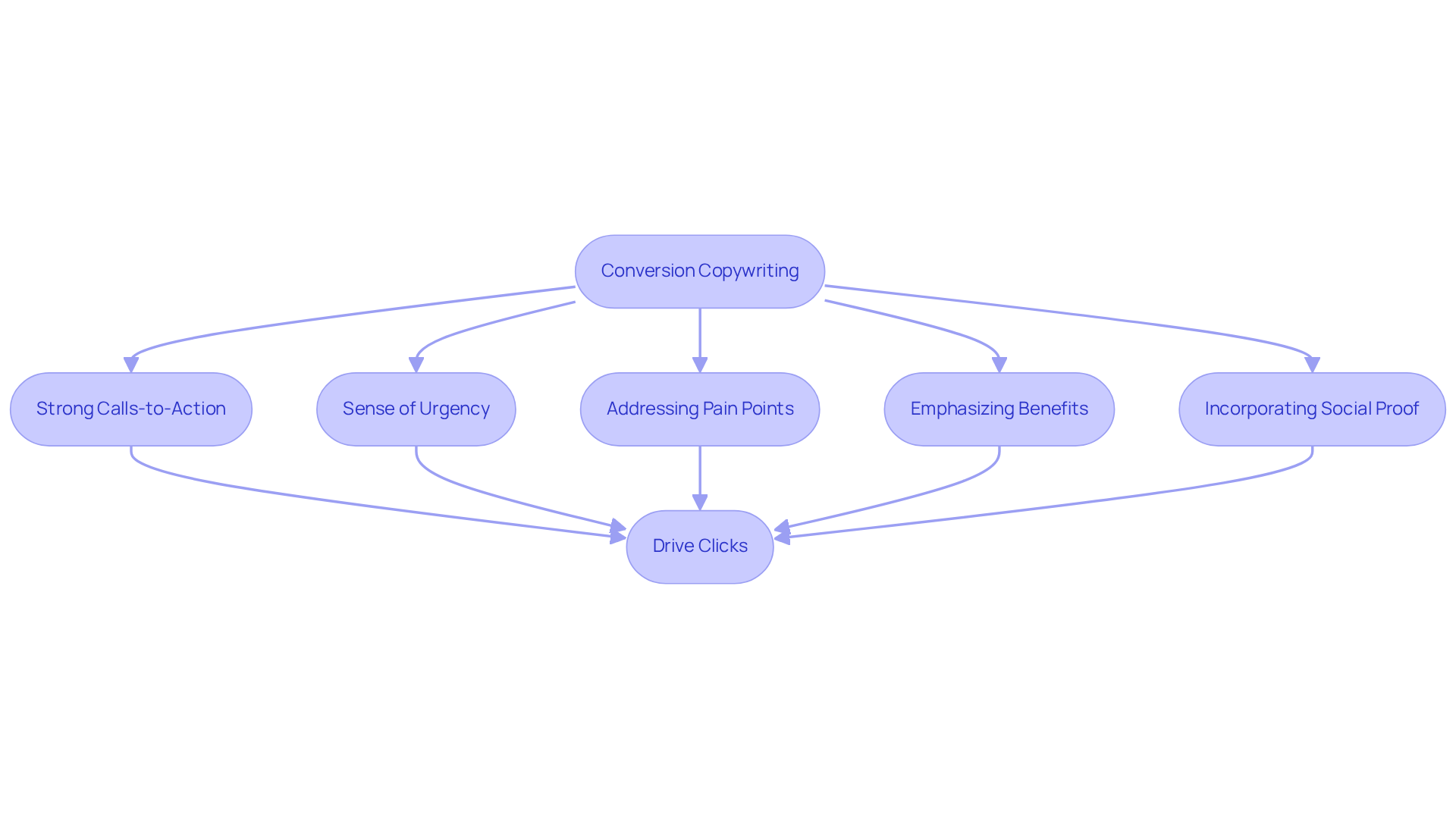
UI/UX Design: Create Engaging Experiences to Increase Click-Throughs
UI/UX design stands as a cornerstone for crafting engaging online experiences that drive clicks. A meticulously structured website, characterized by intuitive navigation, captivating visuals, and responsive design, significantly elevates visitor satisfaction. Essential elements encompass:
- Clear calls-to-action
- Consistent branding
- A streamlined checkout process
For instance, optimizing the navigation menu empowers users to swiftly locate what they need, thereby minimizing frustration and amplifying the likelihood of clicks. Prioritizing customer experience not only fosters a more engaging environment but also translates to heightened click-throughs; enhanced experience design can elevate conversion figures by an impressive 400%. Furthermore, a thoughtfully designed user interface can boost conversion rates by up to 200%. With mobile usage increasingly dominating online interactions, adopting a mobile-first design approach is imperative for direct-to-consumer (DTC) companies. By focusing on these critical components, including tailored calls-to-action that outperform standard versions by 202%, DTC companies can cultivate online experiences that resonate profoundly with their audience.
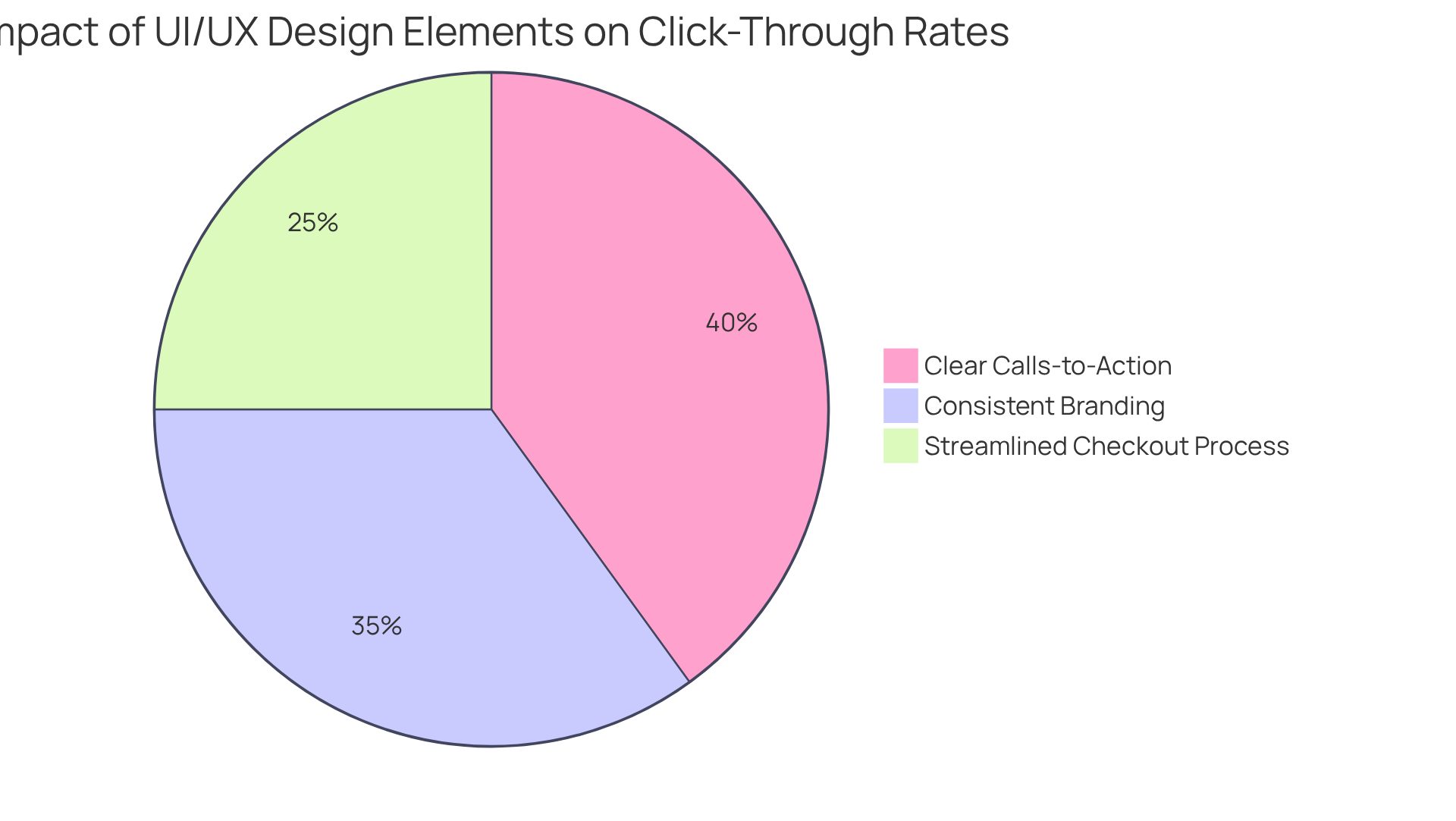
Customer Surveys: Gather Insights to Tailor Click-Through Strategies
Customer surveys serve as a vital resource for companies determined to enhance their click-throughs by providing actionable insights into consumer preferences and experiences. By asking targeted questions, organizations can identify specific pain points and preferences that shape their strategic approach.
For example, when surveys reveal that users find certain features perplexing, brands can swiftly act to simplify these components, resulting in a more intuitive user experience. This proactive refinement not only improves website design but also significantly elevates click-throughs.
Research indicates that 54% of shoppers abandon sales due to inconsistent product content across various channels, highlighting the necessity for cohesive messaging driven by user feedback. As industry experts assert, "customer surveys present an invaluable opportunity for companies to listen to their customers and gain firsthand insights that can shape strategic decisions."
By harnessing insights from surveys, companies can craft a seamless journey that resonates with their audience, ultimately driving higher conversion rates. To optimize the effectiveness of customer surveys, ensure they are clear, focused, and mobile-friendly, and consider following up with respondents to enhance engagement.
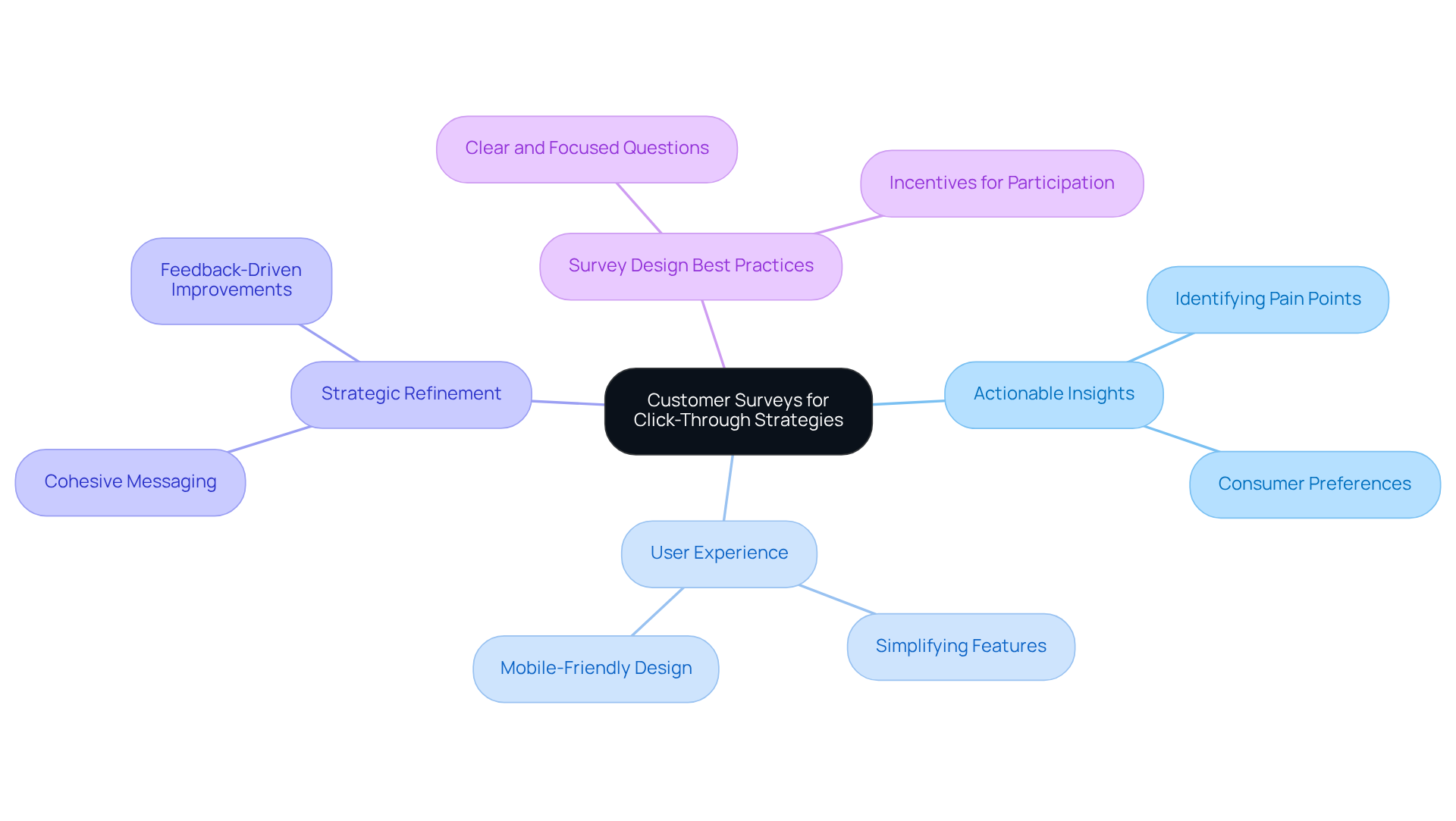
Ongoing A/B Testing: Optimize Elements to Maximize Click-Through Rates
Continuous A/B testing stands as a cornerstone of any effective engagement strategy. By rigorously testing different versions of ads, landing pages, or email campaigns, brands can pinpoint which elements drive the highest levels of engagement. This encompasses testing various headlines, images, and calls-to-action to ascertain which combination yields the most favorable click-throughs.
The click-throughs represent the percentage of individuals who view your ad and subsequently click on it. The crux of this process lies in analyzing the results and making data-driven decisions to optimize performance continually. For instance, if one version of an ad significantly outperforms another, understanding the underlying reasons can inform future campaigns and facilitate sustained improvements.
However, it is crucial to conduct A/B testing with a sufficiently large sample size to draw meaningful insights and to circumvent common pitfalls, such as testing multiple variables simultaneously. Moreover, fostering a culture of continuous testing within marketing teams can significantly enhance the effectiveness of A/B testing efforts.
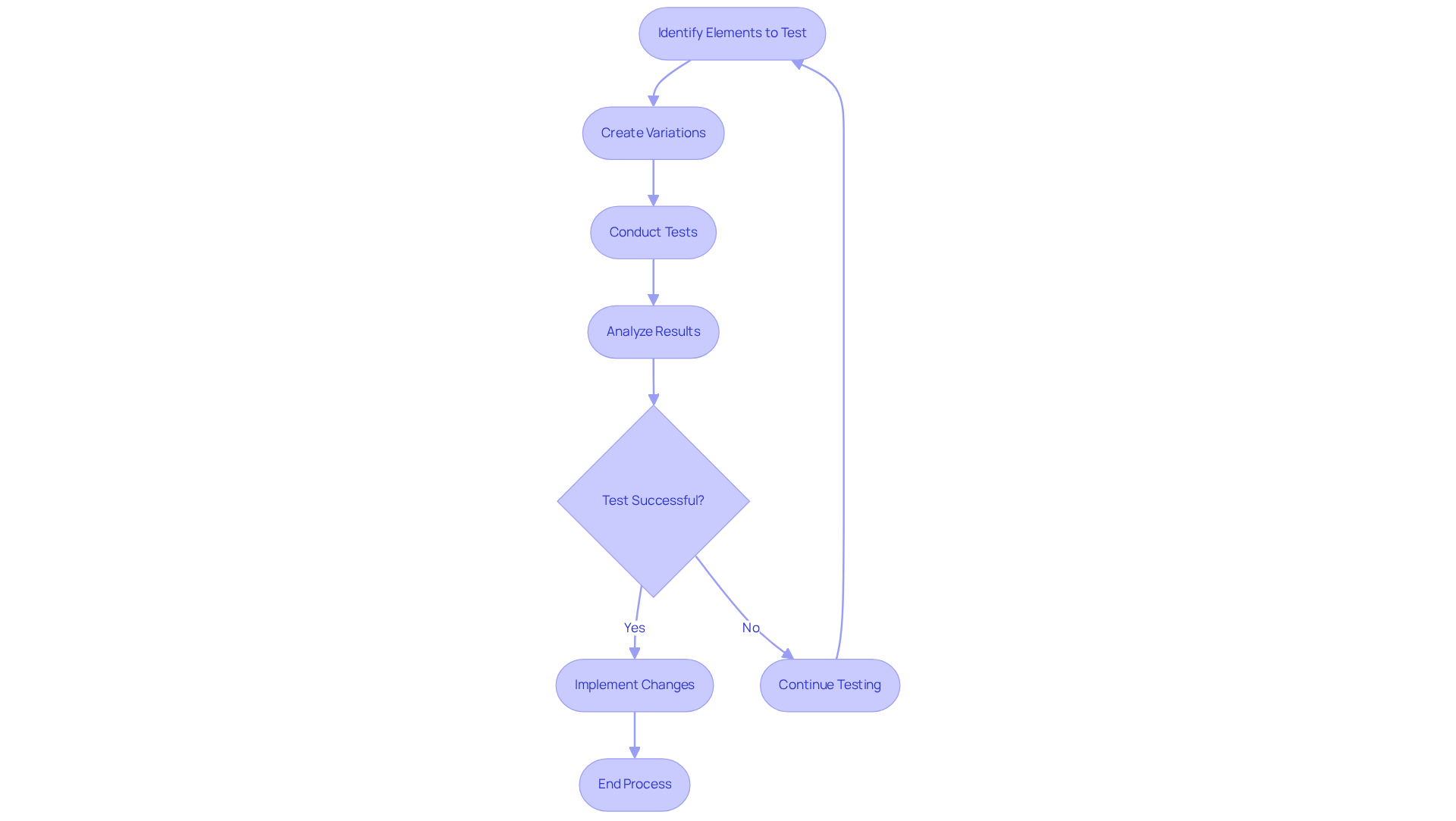
Targeted Keywords: Enhance Visibility to Drive More Clicks
Targeted keywords are essential for enhancing a company's visibility in search engine results. Conducting thorough keyword research and optimizing content around these keywords enables companies to attract more relevant traffic. This process requires the strategic integration of keywords into website copy, meta descriptions, and ad campaigns to align with user search intent.
For example, leveraging long-tail keywords can effectively engage niche audiences who are more likely to convert. By concentrating on the right keywords, brands can achieve significant increases in engagement, ultimately drawing more relevant visitors to their websites.
Research demonstrates that businesses prioritizing high-intent keywords often experience marked improvements in online visibility and engagement metrics, underscoring the importance of a well-structured keyword strategy.
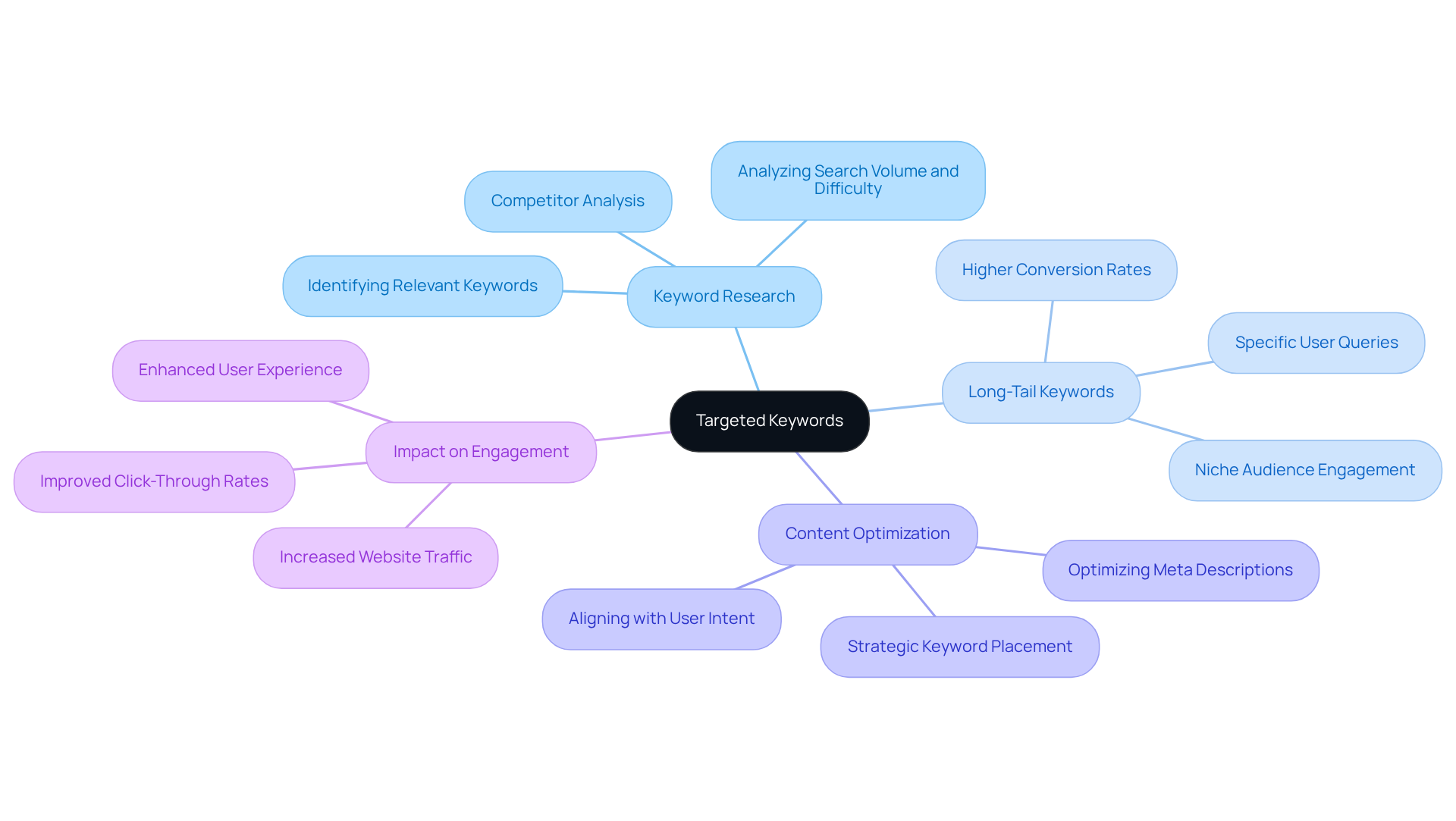
Compelling Meta Descriptions: Write Engaging Snippets to Boost Click-Throughs
Compelling meta descriptions are essential for boosting click-throughs from search engine results pages. These concise snippets must captivate users by clearly articulating the value of clicking through. Ideally, meta descriptions should be confined to 150-160 characters to ensure visibility in search results.
By incorporating relevant keywords, you not only enhance visibility but also align with user intentions, making it easier for potential customers to find what they seek. A strong call-to-action, such as highlighting a unique selling proposition or a limited-time offer, evokes urgency and encourages immediate clicks.
For instance, a well-optimized meta description that emphasizes exclusive discounts or free shipping can significantly enhance user engagement. It is crucial to avoid common pitfalls like keyword stuffing and duplicate descriptions, as these can detrimentally affect performance.
By focusing on crafting effective meta descriptions, DTC companies can increase their click-throughs and strengthen their overall online presence. Bear in mind that Google rewrites between 60% and 70% of all meta descriptions; thus, creating compelling and relevant snippets is imperative.
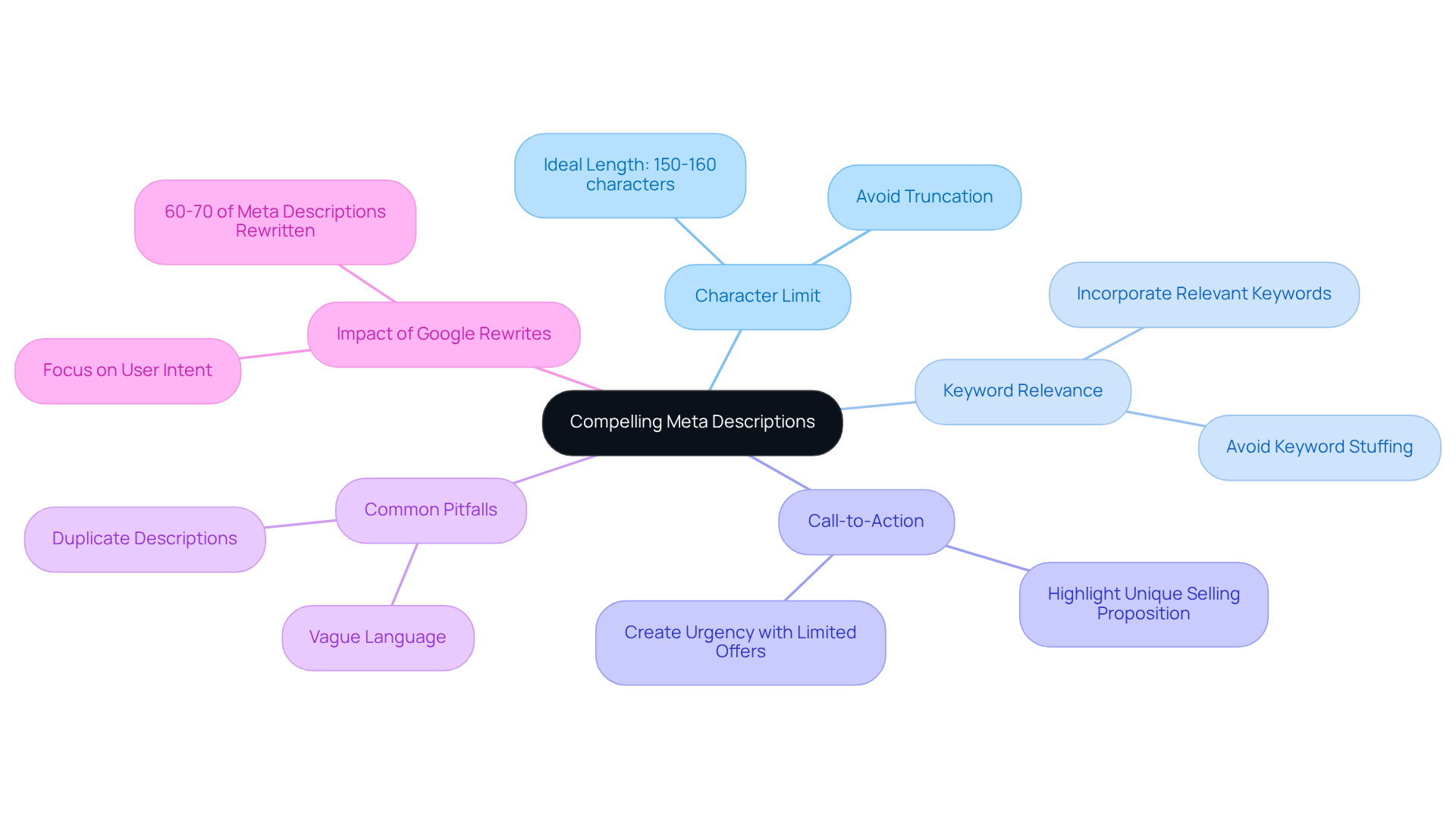
Analytics Tools: Track Performance to Enhance Click-Through Strategies
Analytics tools are indispensable for monitoring performance and refining engagement strategies. Platforms like Google Analytics empower companies to meticulously track vital metrics, including clicks, bounce rates, and user engagement. This data unveils critical insights into campaign effectiveness and highlights areas requiring adjustment.
For instance, when an ad garners high impressions yet low clicks, a thorough analysis of the related metrics can pinpoint potential issues with the ad copy or targeting strategy. By consistently monitoring and analyzing performance, brands can make informed decisions that enhance click-throughs and drive overall campaign success.
![]()
Conclusion
The strategies outlined for boosting click-through rates (CTR) for direct-to-consumer (DTC) brands underscore the critical need for a multifaceted approach to digital marketing. By prioritizing high-velocity conversion rate optimization, companies can swiftly implement changes that align with consumer behavior and market trends. This proactive strategy not only addresses immediate engagement challenges but also cultivates sustainable growth over time.
Key insights from the article illuminate the value of:
- User session recordings for comprehending visitor behavior
- Competitor analysis for pinpointing effective tactics
- The potency of conversion copywriting to craft compelling messages
- Enhancing user experience through UI/UX design
- Leveraging customer surveys for actionable feedback
- Conducting ongoing A/B testing as essential components in refining strategies
The integration of targeted keywords and meticulously crafted meta descriptions amplifies visibility and engagement.
Ultimately, the significance of these strategies resides in their collective capacity to drive higher click-through rates, resulting in increased traffic and conversions. DTC brands are urged to embrace these best practices and perpetually innovate their approaches, ensuring responsiveness to consumer needs and market dynamics. The journey toward improved CTR transcends the mere implementation of individual tactics; it necessitates the creation of a cohesive strategy that resonates with the audience and fosters meaningful engagement.
Frequently Asked Questions
What is the focus of Parah Group's CRO programs?
Parah Group's CRO programs focus on rapid testing and iteration to enhance click-through rates by utilizing data-driven insights and consumer psychology principles.
How does Parah Group ensure maximum engagement for online entities?
The agency's strategic approach optimizes every facet of an entity's online presence to increase traffic, conversions, and click-throughs, while also adapting to market fluctuations and evolving consumer behavior.
What role do user session recordings play in optimizing click-throughs?
User session recordings help companies analyze visitor behavior, allowing them to pinpoint user abandonment, identify attention-capturing elements, and assess interactions with site components, leading to informed modifications that enhance engagement metrics.
How can companies use insights from user session recordings?
Companies can use insights from user session recordings to improve user experience by addressing issues such as unclear messaging or unappealing designs, ultimately driving click-throughs and conversion rates.
Why is competitor analysis important for DTC companies?
Competitor analysis is essential for DTC companies as it helps them uncover effective strategies used by rivals, identify market gaps, and emphasize successful messaging and design elements that enhance engagement metrics.
What are some benefits of analyzing competitor ad copy?
Analyzing competitor ad copy can provide insights into effective structures and language, which can help companies refine their own campaigns and significantly boost click-through rates.
How can A/B testing impact cost-per-click (CPC)?
Implementing A/B testing on various ad formats and messaging can lead to a 25-55% reduction in cost-per-click across platforms like Meta and TikTok.
What is the significance of introducing multiple creative variations weekly?
Introducing 20-30 variations of creatives weekly allows companies to evaluate performance and identify the most effective strategies, as most winning creatives emerge from the top 10% of tests.
FAQs











